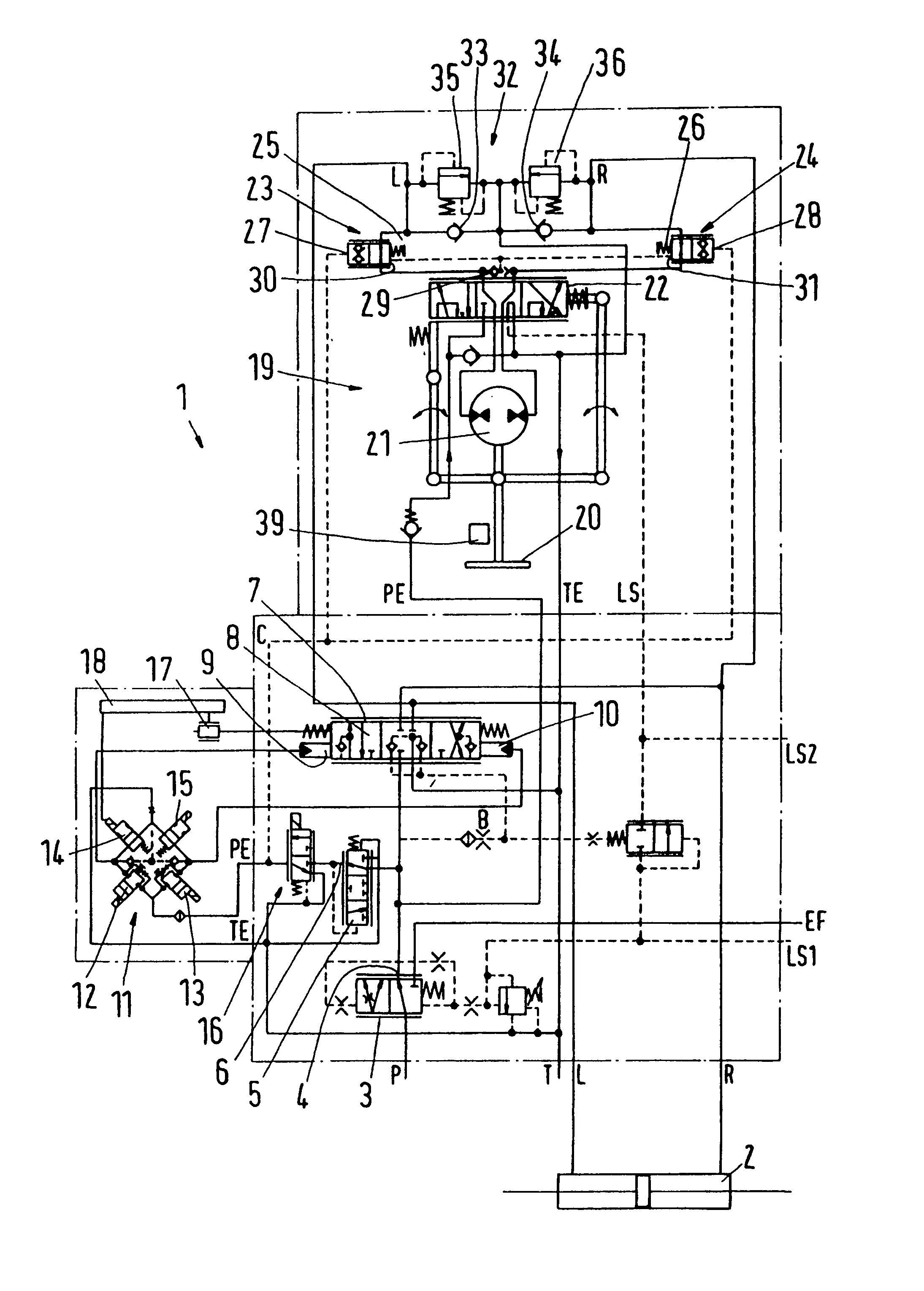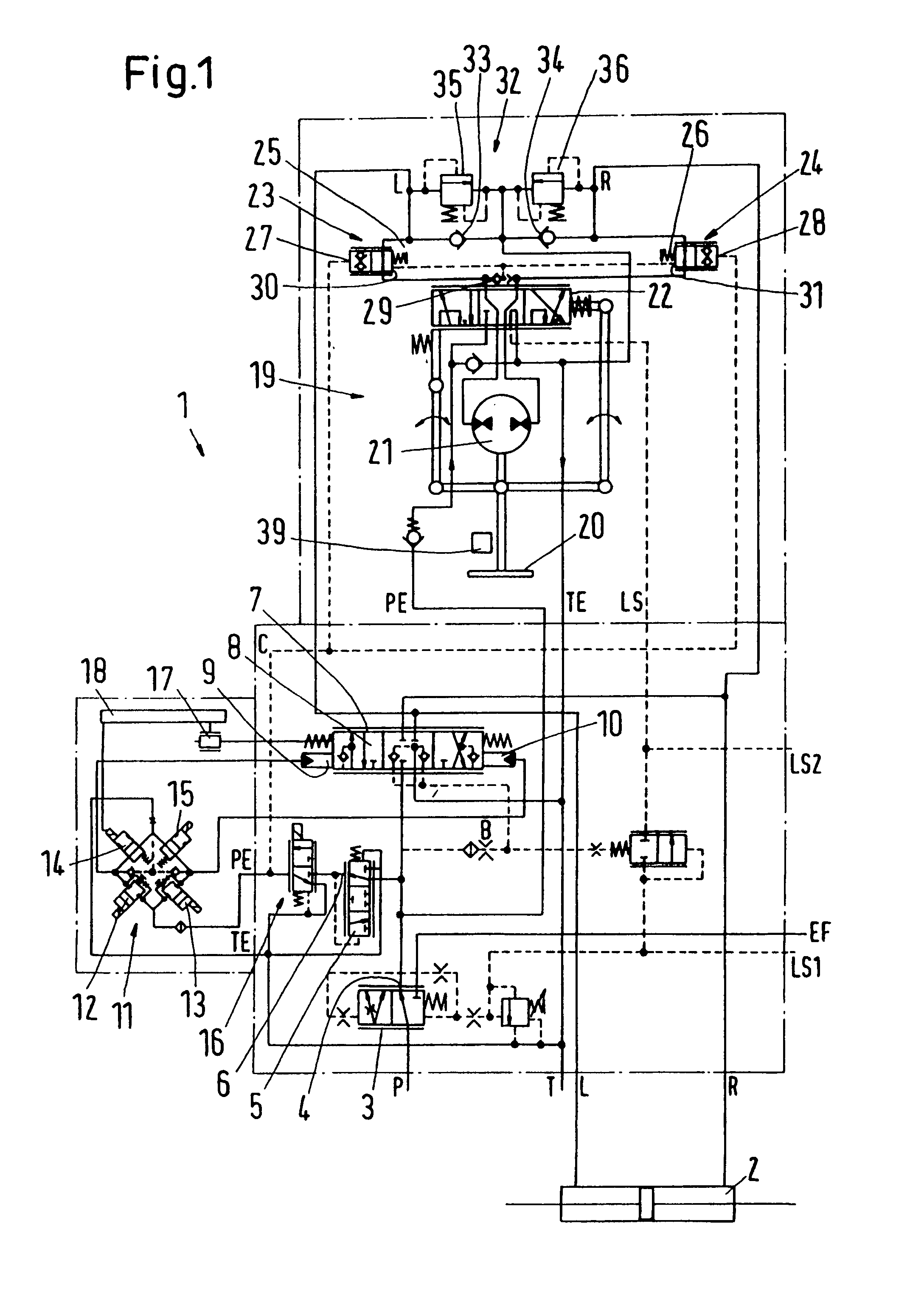Hydraulic steering
a technology of hydraulic steering and steering valve, which is applied in the direction of steering parts, steering controls, alternative steering control, etc., can solve the problems of small displacement of steering valve, limited by pressure control valve, and steering valve can only be supplied with a certain pressure, so as to achieve the effect of keeping the size of the switching technical design small
- Summary
- Abstract
- Description
- Claims
- Application Information
AI Technical Summary
Benefits of technology
Problems solved by technology
Method used
Image
Examples
Embodiment Construction
[0028]FIG. 1 shows a hydraulic steering 1 with a steering motor 2 that can be supplied with hydraulic fluid via two working pipes L, R. The hydraulic fluid is supplied via a high-pressure connection P and discharged via a low-pressure connection T. The high pressure connection P is, for example, connected to a pump that is driven by the drive motor of a vehicle, which is equipped with the steering 1. The low pressure connection T is, for example, connected to a tank (not shown in detail).
[0029]First the high-pressure connection P is connected to a priority valve 3 known per se, whose priority outlet 4 is connected to a pressure control valve 5. The outlet 6 of the pressure control valve 5 supplies a pressure of, for example, 12 bar. The priority outlet 4 of the priority valve 3 is further connected to an inlet of a proportionality valve 7 that has a slide 8, which can be displaced by pressures at control connection 9, 10.
[0030]The control connections 9, 10 are connected to a pilot v...
PUM
 Login to View More
Login to View More Abstract
Description
Claims
Application Information
 Login to View More
Login to View More - R&D
- Intellectual Property
- Life Sciences
- Materials
- Tech Scout
- Unparalleled Data Quality
- Higher Quality Content
- 60% Fewer Hallucinations
Browse by: Latest US Patents, China's latest patents, Technical Efficacy Thesaurus, Application Domain, Technology Topic, Popular Technical Reports.
© 2025 PatSnap. All rights reserved.Legal|Privacy policy|Modern Slavery Act Transparency Statement|Sitemap|About US| Contact US: help@patsnap.com



